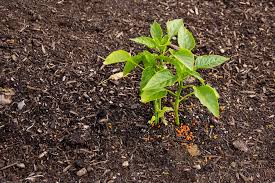
Ago . 21, 2024 01:54 Back to list
Potash Application Strategies for Maximizing Hay Field Productivity and Soil Health
The Importance of Potash for Hay Fields
Potash, a term typically used to refer to various potassium-containing compounds, plays a vital role in agriculture, especially in the production of crops like hay. Hay fields, crucial for feeding livestock, require optimal nutrient management to ensure high yields and quality forage. Among the macronutrients—nitrogen (N), phosphorus (P), and potassium (K)—potassium is a key player in the growth and development of hay crops.
The Role of Potassium
Potassium is essential for various physiological processes within plants. One of its primary functions is its involvement in photosynthesis and the regulation of stomatal opening, which affects transpiration and water usage in plants. This mineral aids in the transport of nutrients and carbohydrates, helping crops to build strong, healthy tissues. For hay crops such as alfalfa, clover, or timothy, adequate potassium levels enhance growth vigor, improve drought resistance, and increase overall resilience to diseases and pests.
Moreover, potassium contributes to the root development of plants, which is particularly important for hay fields. Strong root systems enable plants to access water and nutrients more effectively, improving their ability to sustain growth during periods of stress. Without sufficient potash, hay crops may exhibit stunted growth, reduced yield, and compromised nutritional quality.
Potash Application and Soil Health
potash for hay fields

Soil testing is an indispensable step before applying potash to hay fields. Farmers should assess soil potassium levels and determine the appropriate amount needed to meet the requirements of their specific crops. General recommendations suggest that potassium levels should be maintained at optimal ranges—generally between 150 and 300 ppm (parts per million)—to support healthy growth.
The application of potash can take various forms, including granular fertilizers or liquid solutions. It can be broadcast across the fields or applied in a more targeted manner through banding techniques, depending on the existing soil nutrient profile and crop needs. Timing also matters; for hay fields, it's most effective to apply potash before planting or during the growing season to ensure a continuous supply of nutrients.
Additionally, maintaining optimal potassium levels is not only about immediate crop success but also about long-term soil health. Adequate potash promotes a balanced nutrient profile, reducing the risk of potential nutrient imbalances that could inhibit crop production. Healthy soils rich in potassium can enhance microbial activity and overall soil structure, leading to improved water retention and aeration capabilities.
Economic Benefits
Investing in potash for hay fields can translate into significant economic returns. High-potassium hay crops typically yield greater biomass and superior forage quality, which are vital for livestock nutrition. Quality forage translates to better weight gain and milk production in cattle, ultimately leading to increased profitability for farmers. Furthermore, the use of potash can decrease the need for additional nitrogen applications, leading to cost savings on fertilizer inputs.
In conclusion, potash is an indispensable nutrient for hay fields, significantly impacting the quality and yield of forage crops. By ensuring that potassium levels are adequately maintained through well-planned soil management practices, farmers can promote healthy crop growth, enhance soil health, and improve overall farm productivity. As agricultural challenges continue to evolve, understanding and applying the right nutrients, such as potash, will remain a key strategy for sustainable and profitable hay production.
-
10 10 10 Fertilizer Organic—Balanced NPK for All Plants
NewsJul.30,2025
-
Premium 10 10 10 Fertilizer Organic for Balanced Plant Growth
NewsJul.29,2025
-
Premium 10 10 10 Fertilizer Organic for Balanced Plant Growth
NewsJul.29,2025
-
Premium 10 10 10 Fertilizer Organic for Balanced Plant Growth
NewsJul.29,2025
-
50 Pound Bags of 13-13-13 Fertilizer for All Plants – Bulk & Organic Options
NewsJul.28,2025
-
High-Efficiency 15-30-15 Granular Fertilizer for Healthy Crops
NewsJul.28,2025
